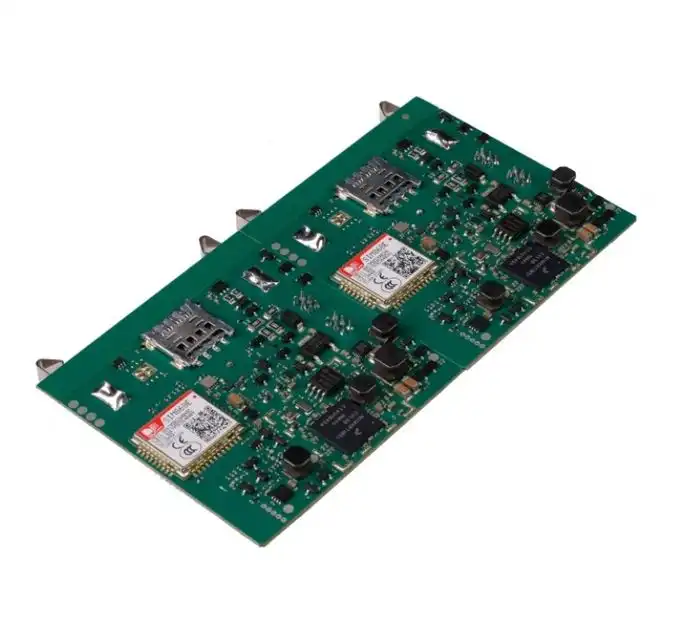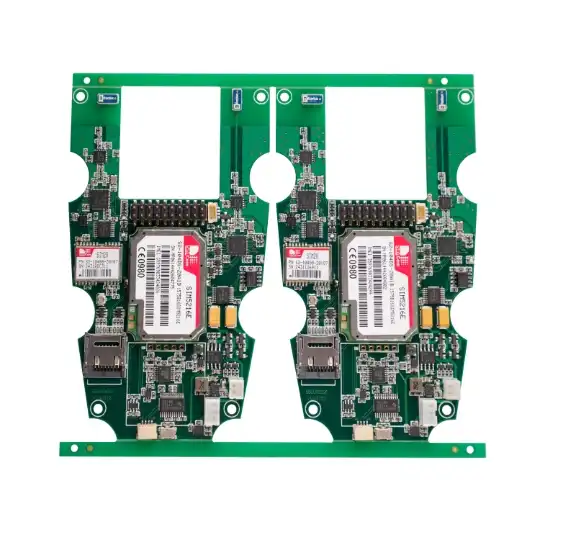Environmental Testing Requirements for Medical and Industrial PCB Assemblies
Environmental testing is crucial for ensuring the reliability and performance of PCB assemblies in medical and industrial applications. These tests simulate various environmental conditions to verify that the assemblies can withstand the rigors of their intended operating environments. From temperature cycling to vibration testing, each procedure plays a vital role in validating the durability and functionality of PCB assemblies. This article explores the key environmental testing requirements for medical and industrial PCB assemblies, providing insights into the standards and methodologies that help guarantee product quality and reliability.

Comprehending Environmental Testing for PCB Assemblies
Environmental testing for PCB assemblies involves subjecting the boards to a series of controlled environmental conditions to assess their performance and durability. These tests are designed to simulate the various stresses and challenges that PCB assemblies may encounter during their operational lifetime. For medical and industrial applications, where reliability is paramount, environmental testing becomes even more critical.
The primary goal of environmental testing is to identify potential weaknesses or failure points in PCB assemblies before they are deployed in real-world scenarios. By exposing the assemblies to extreme conditions, manufacturers can ensure that their products will function reliably in their intended environments, whether it's a sterile medical setting or a harsh industrial facility.
Key Environmental Factors Tested
Several environmental factors are typically evaluated during the testing process:
- Temperature extremes and cycling
- Humidity and moisture resistance
- Vibration and shock resistance
- Electromagnetic compatibility (EMC)
- Salt spray exposure (for corrosion resistance)
- Altitude and pressure variations
Each of these factors can significantly impact the performance and longevity of PCB assemblies. By rigorously testing against these environmental stressors, manufacturers can identify and address potential issues before they lead to product failures in the field.
Specific Testing Requirements for Medical PCB Assemblies
Medical PCB assemblies are subject to stringent environmental testing requirements due to the critical nature of their applications. These assemblies must function flawlessly in healthcare settings, where reliability can directly impact patient safety and treatment efficacy.
Temperature and Humidity Testing
Medical devices often operate in temperature-controlled environments, but they must still withstand variations that may occur during storage, transport, or in different healthcare settings. Temperature cycling tests typically involve exposing PCB assemblies to extreme hot and cold temperatures, often ranging from -40°C to +85°C, with rapid transitions between these extremes.
Humidity testing is equally important, as medical devices may be exposed to high humidity levels in certain healthcare environments. Assemblies are typically subjected to relative humidity levels of up to 95% to ensure they can resist moisture-induced failures.
Sterilization Compatibility
Many medical PCB assemblies must withstand sterilization processes, which can be particularly harsh on electronic components. Common sterilization methods include:
- Autoclave (steam sterilization)
- Ethylene oxide (EtO) gas
- Gamma radiation
PCB assemblies must be tested to ensure they can maintain their integrity and functionality after repeated sterilization cycles.
Biocompatibility Testing
For PCB assemblies used in implantable or wearable medical devices, biocompatibility testing is essential. This ensures that the materials used in the assembly do not cause adverse reactions when in contact with human tissue or bodily fluids. Testing may include cytotoxicity, sensitization, and irritation assessments.
Environmental Testing for Industrial PCB Assemblies
Industrial PCB assemblies often face more severe environmental challenges compared to their medical counterparts. These assemblies may be deployed in factories, outdoor installations, or harsh industrial environments where they are exposed to extreme conditions.
Vibration and Shock Testing
Industrial PCB assemblies frequently operate in environments with high levels of vibration or potential for mechanical shock. Vibration testing typically involves subjecting the assembly to various frequencies and amplitudes to simulate real-world conditions. Shock testing assesses the ability of the assembly to withstand sudden impacts or drops.
Common standards for vibration and shock testing include:
- MIL-STD-810G (Method 514.6 for vibration, Method 516.6 for shock)
- IEC 60068-2-6 (Vibration testing)
- IEC 60068-2-27 (Shock testing)
Ingress Protection (IP) Testing
Many industrial PCB assemblies must resist dust, water, and other contaminants. IP testing evaluates the assembly's ability to prevent ingress of these elements. Common IP ratings for industrial applications include IP65 (dust-tight and protected against water jets) and IP67 (dust-tight and protected against temporary immersion).
Electromagnetic Compatibility (EMC) Testing
Industrial environments often contain various sources of electromagnetic interference (EMI). EMC testing ensures that PCB assemblies can operate correctly in the presence of EMI and do not emit excessive electromagnetic radiation themselves. Key EMC standards include:
- IEC 61000 series (for various EMC phenomena)
- EN 55011 (for industrial, scientific, and medical equipment)
Thermal Cycling and Heat Dissipation
Industrial PCB assemblies may be subjected to extreme temperature variations and need to dissipate heat effectively. Thermal cycling tests assess the assembly's ability to withstand repeated temperature changes, while thermal imaging and other techniques are used to evaluate heat dissipation capabilities.
Conclusion
Environmental testing is a critical aspect of developing and manufacturing reliable PCB assemblies for medical and industrial applications. By simulating real-world conditions and subjecting assemblies to extreme stresses, manufacturers can identify potential weaknesses and optimize their designs for maximum durability and performance.
For medical PCB assemblies, the focus is on ensuring reliability in controlled healthcare environments and compatibility with sterilization processes. Industrial PCB assemblies, on the other hand, must withstand a broader range of environmental challenges, including vibration, shock, and exposure to contaminants.
By adhering to industry standards and conducting thorough environmental testing, manufacturers can produce PCB assemblies that meet the stringent requirements of medical and industrial applications, ultimately leading to safer, more reliable products that can withstand the rigors of their intended operating environments.
FAQ
Q: Why is environmental testing important for PCB assemblies?
A: Environmental testing ensures PCB assemblies can withstand various conditions they may encounter during operation, storage, and transport. It helps identify potential weaknesses and ensures reliability in real-world applications.
Q: What are some common environmental tests for PCB assemblies?
A: Common tests include temperature cycling, humidity exposure, vibration and shock testing, electromagnetic compatibility (EMC) testing, and ingress protection (IP) testing.
Q: How do environmental testing requirements differ for medical and industrial PCB assemblies?
A: Medical PCB assemblies often focus on sterilization compatibility and biocompatibility, while industrial assemblies may require more rigorous testing for vibration, shock, and extreme environmental conditions.
Expert PCB Assembly Environmental Testing Services | Ring PCB
At Ring PCB, we specialize in comprehensive environmental testing for medical and industrial PCB assemblies. Our state-of-the-art facilities and experienced team ensure that your assemblies meet the highest standards of reliability and performance. As a trusted PCB manufacturer since 2008, we offer full turn-key solutions, from PCB fabrication to assembly and rigorous testing. Our ISO-certified quality control processes guarantee exceptional results. For expert guidance on environmental testing requirements or to discuss your PCB assembly needs, contact us at [email protected].
References
1. Johnson, A. R. (2019). Environmental Testing Methodologies for Medical Device PCB Assemblies. Journal of Medical Electronics, 45(3), 78-92.
2. Smith, B. C., & Thompson, D. L. (2020). Industrial PCB Assembly Reliability: A Comprehensive Guide to Environmental Testing. Advanced Manufacturing Technology, 12(2), 145-160.
3. International Electrotechnical Commission. (2018). IEC 60068-2: Environmental Testing for Electronic Equipment. IEC Publications.
4. Zhang, L., & Chen, X. (2021). Advancements in EMC Testing for Industrial PCB Assemblies. IEEE Transactions on Electromagnetic Compatibility, 63(4), 1122-1135.
5. Brown, K. M., et al. (2022). Biocompatibility Testing Protocols for Medical-Grade PCB Assemblies. Biomedical Engineering Journal, 37(1), 56-71.

Welcome to Ring PCB! Share your inquiry, and receive a tailored quotation!

Ring PCB, your trusted partner for PCB & PCBA Full Turnkey Solutions



